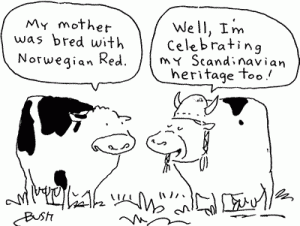Get the Best of Both Worlds With Crossbreeding
go.ncsu.edu/readext?425971
en Español / em Português
El inglés es el idioma de control de esta página. En la medida en que haya algún conflicto entre la traducción al inglés y la traducción, el inglés prevalece.
Al hacer clic en el enlace de traducción se activa un servicio de traducción gratuito para convertir la página al español. Al igual que con cualquier traducción por Internet, la conversión no es sensible al contexto y puede que no traduzca el texto en su significado original. NC State Extension no garantiza la exactitud del texto traducido. Por favor, tenga en cuenta que algunas aplicaciones y/o servicios pueden no funcionar como se espera cuando se traducen.
Português
Inglês é o idioma de controle desta página. Na medida que haja algum conflito entre o texto original em Inglês e a tradução, o Inglês prevalece.
Ao clicar no link de tradução, um serviço gratuito de tradução será ativado para converter a página para o Português. Como em qualquer tradução pela internet, a conversão não é sensivel ao contexto e pode não ocorrer a tradução para o significado orginal. O serviço de Extensão da Carolina do Norte (NC State Extension) não garante a exatidão do texto traduzido. Por favor, observe que algumas funções ou serviços podem não funcionar como esperado após a tradução.
English
English is the controlling language of this page. To the extent there is any conflict between the English text and the translation, English controls.
Clicking on the translation link activates a free translation service to convert the page to Spanish. As with any Internet translation, the conversion is not context-sensitive and may not translate the text to its original meaning. NC State Extension does not guarantee the accuracy of the translated text. Please note that some applications and/or services may not function as expected when translated.
Collapse ▲We’ve all heard the horror stories of purebred dogs and their health problems while mutts seem to live forever. Obviously, if you are a purebred breeder, you have an incredible amount of responsibility to uphold the characteristics of a breed. However, if you are a typical commercial cattlemen, let’s take a look at how these thoughts can translate to our cattle herds.
while mutts seem to live forever. Obviously, if you are a purebred breeder, you have an incredible amount of responsibility to uphold the characteristics of a breed. However, if you are a typical commercial cattlemen, let’s take a look at how these thoughts can translate to our cattle herds.
Why Crossbreed?
Crossbred cattle can have some significant advantages over the use of one breed in your cattle. The two main benefits include hybrid vigor as well as combining the best strengths of the various breeds used to form the cross.
- Hybrid vigor, also known as heterosis, explains the superiority in performance of the crossbred animal compared to the average of the straightbred parents. Hybrid vigor is most noticeable in low heritable traits, such as growth rate, and reproductive efficiency.
- The most important advantage for crossbreeding is found in the crossbred cow. Maternal heterosis results in improvements in fertility, calf livability, calf weaning weight and cow longevity.
- Combining strengths between breeds is also an important reason for crossbreeding. For example, British Breeds (Angus & Hereford) are typically high in marbling potential where Continental breeds (Simmental, Charolais, Gelbveih) have offspring that have desirable levels of marbling and yield grade. Knowing the advantages of the breeds before you breed is important.
- True crossbreeding is a deliberate decision to produce cattle that have a known genetic make up to pass genetics from parents to produce a calf with desirable characteristics.
- Unfortunately, it is hard to keep a consistent ratio of breeds in a beef herd, especially a small one. Take a “Black Baldy” for instance, is a 50/50 cross of Hereford and Angus parents. To keep a consistent ratio in the herd, you must have a terminal program in which you keep no offspring back in the herd.
- When crossbred offspring are rebred, the next generation of calves will display characteristics anywhere along a scale between the two parents
Mixed Breeding
Mixed breeding is similar to crossbreeding, combining multiple breeds, but with one major difference: there is no strict adherence to breed ratios within the herd. Managing a mixed breed cattle herd is pretty simple, typically keeping whatever replacements you choose and running cattle as a single herd. However, the calves will have varying traits, body sizes, growth rates, and environmental adaptations. The genetic randomness of a mixed breed herd can create a lot of inconsistency in the calf crop. Additionally, the hybrid vigor drops significantly after the first generation cross. You can still breed to gain desirable genetics, however any typical bump in pounds for calves or maternal traits are typically diminished after the initial cross.
Why Does It Matter?
This does not mean that having a mixed breed herd is “bad.” However, you can make more informed decisions if you know primarily the genetic makeup of your cow herd. Knowing the major breeds of your mixed breed cow herd can definitely have its advantages. The biggest advantage comes in making herd sire selections. Knowing what the majority of your cattle lack as far as desirable characteristics should drive your bull selections. Remember that a bull is only half of the equation and that your cow herd is a very important part of producing desirable calves. Additionally, having a uniform calf crop is desirable, especially to those marketing calves off the farm. Having a consistency to a calf crop year after year can only build the reputation of your herd and also lead to a desirable product.
If you would like more information on developing a crossbreeding program or information on selecting a bull to meet the needs of your cow herd, please contact your local Extension Agent for assistance.
NCSU Extension




